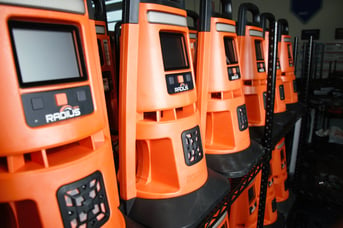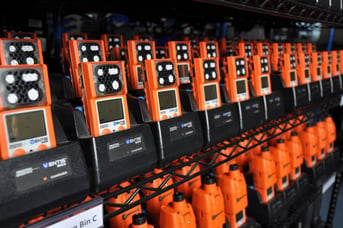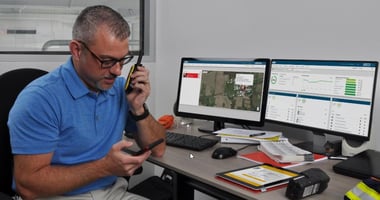Turnarounds are among the highest stakes periods your business will ever experience. Not only are critical process units offline for weeks or even months—but also your employees could be taking on unfamiliar tasks. Add new contractors who don’t know your site, and you have all the ingredients for a major meltdown.
Before your next turnaround, address these four safety challenges so they don’t derail your schedule and blow your budget:
1. Protecting All Workers
Staffing a turnaround is a challenge—there’s no way around it. But you need to look beyond having the right workers in the right places. You also need to consider whether workers have the right safety tools. Workers who have staffed your site for 10 years probably know the safety procedures like the backs of their hands. The same won’t be true for new contractors. In this case, consider tools that help level the playing field when it comes to safety. Some gas detectors have panic buttons, man down alarms that detect falls, custom alarm messages, and live monitoring to help improve safety for less experienced workers. To make safety even easier, location beacons can alert workers when they’re approaching a restricted area or need to take extra safety precautions, like wearing a respirator.
2. Coordinating Logistics
Managing turnaround logistics used to require boots on the ground monitoring and manual check in processes. Today, connectivity tools can automate that process to simplify logistics. Wireless gas detectors can instantly share gas readings with nearby monitors so workers know when a peer is in danger. Taking connectivity a step further, live monitoring software can display each gas monitor’s status and gas readings to safety managers, who can then see their entire workforce on a map. You can even integrate readings from fence line or area monitors to ensure a gas hazard in one part of your facility won’t impact operations in another part.
3. Staying Within Budget
With the cost of turnarounds constantly creeping higher, budget is a key factor in decisions. When it comes to safety, however, consider whether cutting costs now will lead to safety issues down the road. Investing in the right safety tools can make the difference between a smooth turnaround and one crippled by lawsuits and soaring costs. Top-quality safety tools can come with a hefty price tag, but many suppliers provide rental devices and software at a fraction of the cost.
4. Evaluating Success
Planning for your next turnaround should begin the moment your current one ends. Use safety data from gas detectors and other connected devices to identify where workers encountered gas hazards, see whether they dismissed critical alerts as false alarms, and understand alarm patterns to identify and resolve safety hazards. With data collection and analysis software, you can use your safety data to guide decisions and change behavior.
The bottom line is that turnarounds require robust safety solutions, and with rental options, you never need sacrifice safety to stay within budget.



